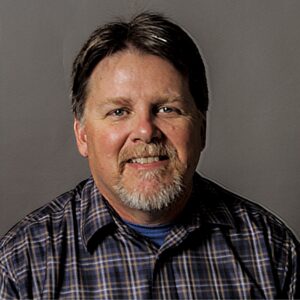Bridging the Bay: Creating a Common Collective Identity among Stakeholders of the Chesapeake Bay Watershed
Researchers
Background Info
The Chesapeake Bay is the largest estuary in the U.S., with a watershed covering approximately 64,000 mi2. It stretches from Cooperstown, NY in the north, to central Pennsylvania in the west, and southern Virginia in the south. The range of ecosystems is enormous as is the range of cultures. The Bay includes densely populated areas around Washington, DC and Baltimore as well as extremely rural areas of north central Pennsylvania and upstate New York.

Problem
The Chesapeake Bay was once one of the most productive bodies of water in the world. The fishing industry thrived on rockfish, oysters, blue crab, and shad. But fertilizer, stormwater, and waste-water runoff increased the presence of nitrogen and phosphorus, which produce algae blooms and decrease water clarity. Both create conditions hostile to marine life with corresponding economic repercussions for fishing and tourism. The problem is acute: The Chesapeake Bay Foundation graded the Bay at D+ for 2018. Top-down efforts by the federal and state governments to address the problem have yielded limited success.
The poor condition of the Chesapeake Bay is the product of human behavior. For example, fertilizers used in the northern portions of the watershed to increase crop yields create costs in the form of polluted waters and depleted fisheries that are borne by downstream residents. Northern farmers may not be aware of the consequences of their actions. Or they may not care much about others who are physically and culturally distant from them, as well as being citizens of different states.
Goals
The notion of collective identity holds that individuals are able to conceive of themselves as part of a broader community defined by shared needs, values, and practices. Collective identity is not a binary, but rather a continuum that ranges from awareness that a group exists, to identifying one’s self as a group member, to the belief that collective action is required to address the obstacles that face the group. Crucial components of the construction of collective identity include shared narratives, networks of relationships, and emotional investments of group members.
The overarching aim of our project is to devise and test methods for moving residents of the watershed from awareness (or the lack thereof) towards the action end of the continuum. This involves two fundamentally communicative strategies: (a) increasing awareness of the social category (i.e., the watershed as a group unit) and (b) encouraging residents of the watershed to see themselves as members of that group.
Progress/Findings
Direct contact among residents of a 64,000 square mile area might seem implausible, but a growing body of research makes it clear that various communication technologies can function in that role including websites, text-based chat, email, audio conferencing, video conferencing, and immersive augmented or virtual reality. This study contributes to awareness of, and action towards, creating a collective identity to reduce the decline of the Chesapeake Bay.





